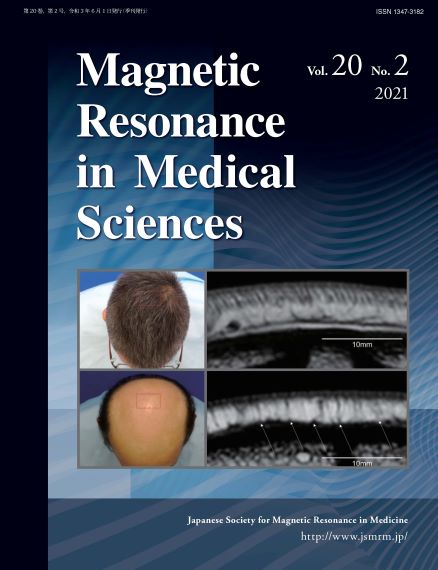20 巻, 2 号
選択された号の論文の12件中1~12を表示しています
- |<
- <
- 1
- >
- >|
Reviews
-
 2021 年 20 巻 2 号 p. 125-138
2021 年 20 巻 2 号 p. 125-138
発行日: 2021年
公開日: 2021/06/01
[早期公開] 公開日: 2020/06/15 -
2021 年 20 巻 2 号 p. 139-151
発行日: 2021年
公開日: 2021/06/01
[早期公開] 公開日: 2020/05/11PDF形式でダウンロード (12499K)
Major Papers
-
2021 年 20 巻 2 号 p. 152-159
発行日: 2021年
公開日: 2021/06/01
[早期公開] 公開日: 2020/05/27PDF形式でダウンロード (4724K) -
2021 年 20 巻 2 号 p. 160-165
発行日: 2021年
公開日: 2021/06/01
[早期公開] 公開日: 2020/05/01PDF形式でダウンロード (3790K) -
2021 年 20 巻 2 号 p. 166-174
発行日: 2021年
公開日: 2021/06/01
[早期公開] 公開日: 2020/05/11PDF形式でダウンロード (4664K) -
2021 年 20 巻 2 号 p. 175-181
発行日: 2021年
公開日: 2021/06/01
[早期公開] 公開日: 2020/07/09PDF形式でダウンロード (3792K) -
2021 年 20 巻 2 号 p. 182-189
発行日: 2021年
公開日: 2021/06/01
[早期公開] 公開日: 2020/06/26PDF形式でダウンロード (3827K) -
2021 年 20 巻 2 号 p. 190-203
発行日: 2021年
公開日: 2021/06/01
[早期公開] 公開日: 2020/07/02PDF形式でダウンロード (6901K) -
2021 年 20 巻 2 号 p. 204-215
発行日: 2021年
公開日: 2021/06/01
[早期公開] 公開日: 2020/07/02PDF形式でダウンロード (4609K)
Technical Note
-
2021 年 20 巻 2 号 p. 216-221
発行日: 2021年
公開日: 2021/06/01
[早期公開] 公開日: 2020/07/08PDF形式でダウンロード (4386K)
Brief Communications
-
2021 年 20 巻 2 号 p. 222-226
発行日: 2021年
公開日: 2021/06/01
[早期公開] 公開日: 2020/05/18PDF形式でダウンロード (4046K) -
2021 年 20 巻 2 号 p. 227-230
発行日: 2021年
公開日: 2021/06/01
[早期公開] 公開日: 2020/07/01PDF形式でダウンロード (4920K)
- |<
- <
- 1
- >
- >|
